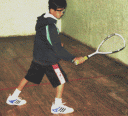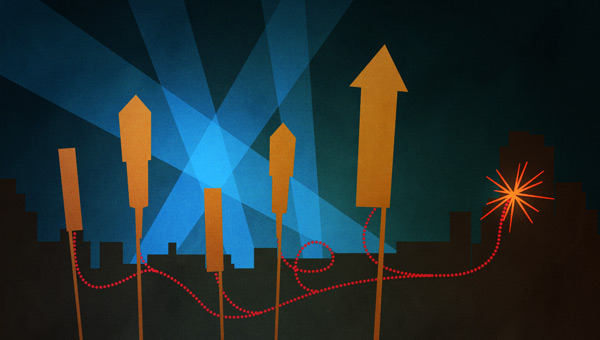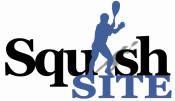Backhand Drive
As mentioned earlier the backhand is the more natural of the two sides. Most people would wonder why but ask those who have played the game and they will tell you that this is what they have come to understand after playing the game. The answer to this lies with the position of the elbow of the hand making the shot. The elbow position plays a very significant role in stroke making for any sport played predominantly with a racket or a bat.
Since between the fingers, wrist, elbow and shoulder contribute to making a stroke, it is but obvious that the elbow position becomes significant. The following pictures will elaborate what is being mentioned here.


See how in the case of the first picture while attempting the forehand drive the players elbow lags behind and gets tucked inside his body. On the contrary the second photo shows a clear elbow taking a lead into the backhand strike. This is natural and the cause of what has been state earlier.
People playing the game for the first time find the backhand drive difficult as they are unable to exert the same power in it like that of the forehand even though a backhand is simply the mirror image of the forehand drive. On the backhand, the ball is relatively difficult to see more due to the temporary obstruction that is created by the striking rackets backswing. Once you get a hang of the strike it is a more controlled side to execute your strokes from.
Shot Power or Ball Speed
As we have already discussed that the ball speed /shot power is not purely dependant on the back-swing – other aspects like leading to it or correct footwork, transfer of weight, and the follow through contribute significantly. The backswing on the backhand side requires the striking arm has to go around from in front of the chest to seek space beyond the other shoulder, in doing so the elbow automatically takes a lead in all backhand drives. In the following section, a detailed explanation of the techniques used, and a breakdown of the shot will further explain and clarify what has been discussed above.
Position and Swings
In the earlier session we learnt about the Squash Stance now from there we will see how to proceed into the backhand drive.


-
From the ready position in the Squash Stance one turn at the trunk in the direction of the ball. For movement on the backhand side the right leg moves across to make us side-on facing the backhand side of wall as shown below.

-
Notice as the right leg moves across how the racket preparation starts.The back-swing is completed in this photo. Notice the right leg is not too far away from the left ensuring balance for shot execution. Also pay attention to the “cocked wrist” position.

-
Moving into the shot player is now completely facing the side wall. Notice that the player starting to bend on the front knee while getting into the drive. Notice how the wrist comes into play as its un-cocking starts.

-
The left heel is beginning to rise in the photo to facilitate rotation of the waist. The wrist is completely un-cocked.

-
The ball is struck in line with the right knee and the waist starts to straighten and the racket follows through with eyes following the ball completing the shot /drive.

Points to Ponder
-
First into any shot is the balance – which is achieved with the conservative footwork.
-
Knees should bend as the racket strikes the ball, ensuring that you have a low center of gravity.
-
Next are a well timed back swing /early racket preparation.
-
Then is correct and smooth trunk rotation.
-
Strike with a open face and the racket head ball perpendicular to the side wall.
-
Good follow through.





































Leave a comment